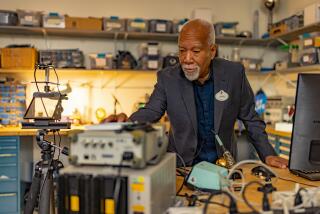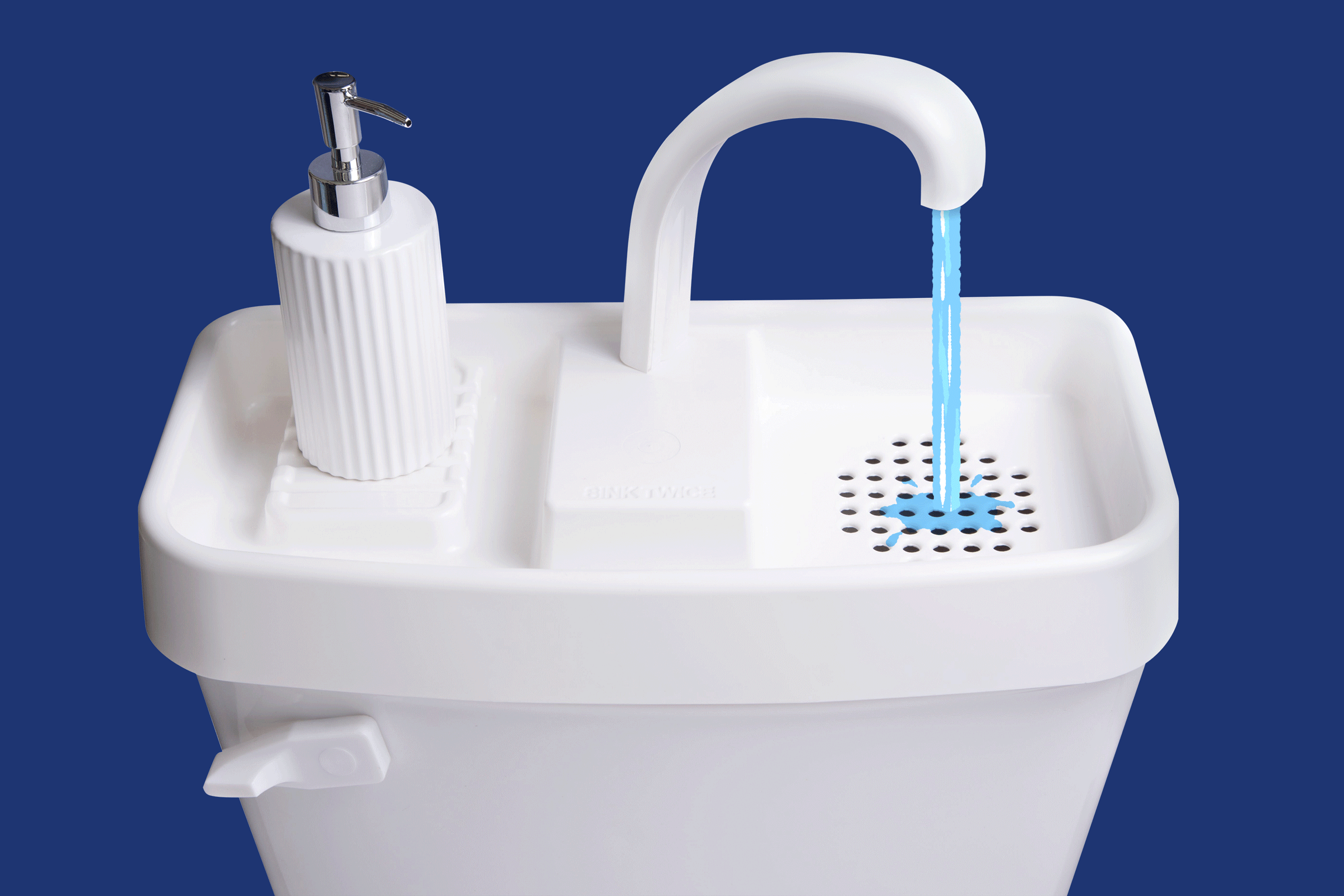Rocket Scientist Blasts Off Into Toyland
- Share via
SMYRNA, Ga. — On Lonnie Johnson’s office wall, right next to his patents for a thermostat, hair-drying rollers and a wet diaper detector, is patent No. 4,757,946--for the flow-actuated pulsator.
The Super Soaker, as it’s known to millions, is a little more advanced than your typical water gun. This high-powered weapon has drenched many backyard warriors and revitalized the toy gun market.
And unlike his work in the design of three NASA space probes that earned him a plaque, this homemade gadget turned the rocket scientist into a millionaire.
“Obviously it was a cut above anything that was available, but I never expected it would set the standard worldwide in water guns,” said Johnson, 49, sitting in his suburban Atlanta research and development office.
A native of Mobile, Ala., Johnson started his career in 1968 when he won a state science fair competition with Linex, a remote-controlled robot he built using batteries, compressed air and tape reels.
“Back then robots were unheard of, so I was one of only a few kids in the country who had his own robot,” he said.
Not bad for a black kid who was told while growing up in the South that he didn’t have what it took to be an engineer. Although disheartened, Johnson persevered, earning a bachelor’s degree in mechanical engineering and a master’s in nuclear engineering. He holds wide-ranging patents--49 in all--and is working on an additional dozen or so.
As an engineer at the National Aeronautics and Space Administration’s acclaimed Jet Propulsion Laboratory in Pasadena, Johnson worked on Voyager, Mars Observer and Galileo.
“I came up with the idea of a memory-keeper power supply that would operate even if there was a short circuit aboard the spacecraft,” he said of his work on Galileo, which was launched in 1989.
At the time of his most lucrative stroke of creative genius, in 1982, Johnson was an engineer at the Strategic Air Command in Omaha, Neb., working in his spare time on a new type of heat pump that would use water instead of Freon.
He hooked up a model of the pump to the bathroom sink in his home.
“I turned around and I was shooting this thing across the bathroom into the tub and the stream of water was so powerful that the curtains were swirling in the breeze it sent out,” he said. “I thought, ‘This would make a great water gun.’ ”
The Pneumatic Water Gun was what he dubbed the first prototype. He received the patent--No. 4,591,071--for the squirt gun in 1986, but he decided not to manufacture the plastic gun himself after determining that it would cost $200 per gun for the first 1,000.
Then, in 1989, he met some executives with Larami Corp. at a toy fair. Two weeks later he was sitting in the company’s conference room with a model of the Super Soaker he had created out of a plastic Coke bottle, PVC pipe and Plexiglas.
“I pumped it up and fired it across the conference room,” he recalled. “Wow,” was the reaction from the suited executives. “From that point it was a done deal.”
The Super Soaker, for which Johnson received a patent in 1988, was introduced into the market in 1990 with a pumped-up reservoir capable of firing a stream of water up to 50 feet. It blew away plain old water pistols.
Today, more than 250 million of the high-tech water weapons have been sold, according to Al Davis, Larami executive vice president.
“That’s four guns to every kid in the United States,” Davis said, noting that the toys also found a surprise market among adults.
The giant water guns run the gamut from a $5 pocket-size version to the $50 CPS-3000, a gray, blue and red plastic weapon with a 2-gallon backpack guaranteed to soak its target.
The toy’s success extends beyond the hot weather.
“It contributes to profits year-round,” said Chris Byrne, editor of Playthings MarketWatch, a toy trade publication. “It’s mainly a spring and summer toy, but that doesn’t mean in places like Florida and California kids aren’t getting Super Soakers for Christmas.”
Royalties Johnson has earned from his invention have helped him open his own research firm in Smyrna, where his staff of 18 is busy working on what Johnson hopes is his next multimillion-dollar idea.
Johnson, a modest, soft-spoken father of three, refused to disclose exactly how much his toy invention has earned him.
“I’m doing quite well,” he said with a smile. “Put it like this, I could close this place down and go lay on the beach if I wanted to.”
More to Read
Sign up for Essential California
The most important California stories and recommendations in your inbox every morning.
You may occasionally receive promotional content from the Los Angeles Times.










